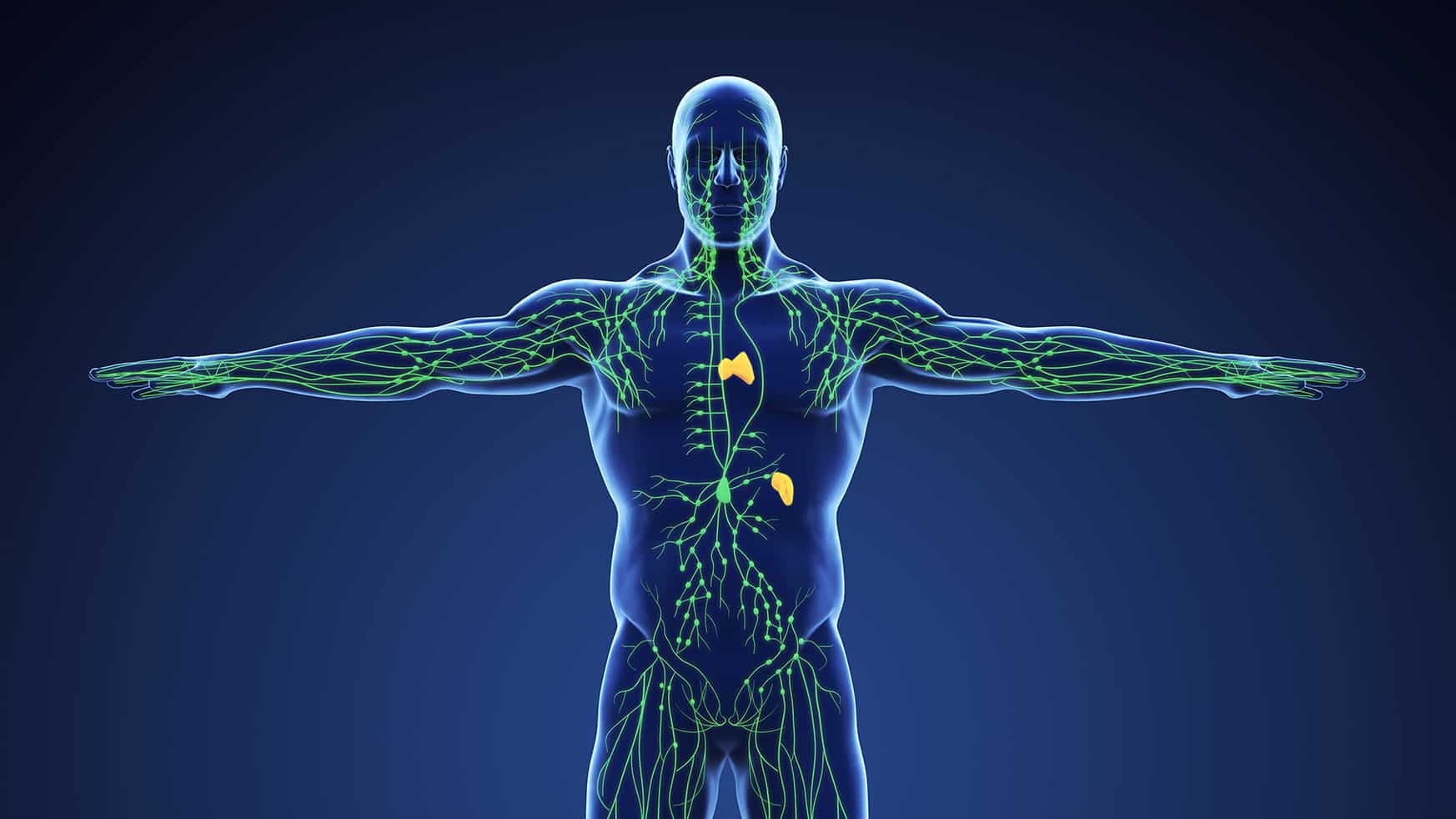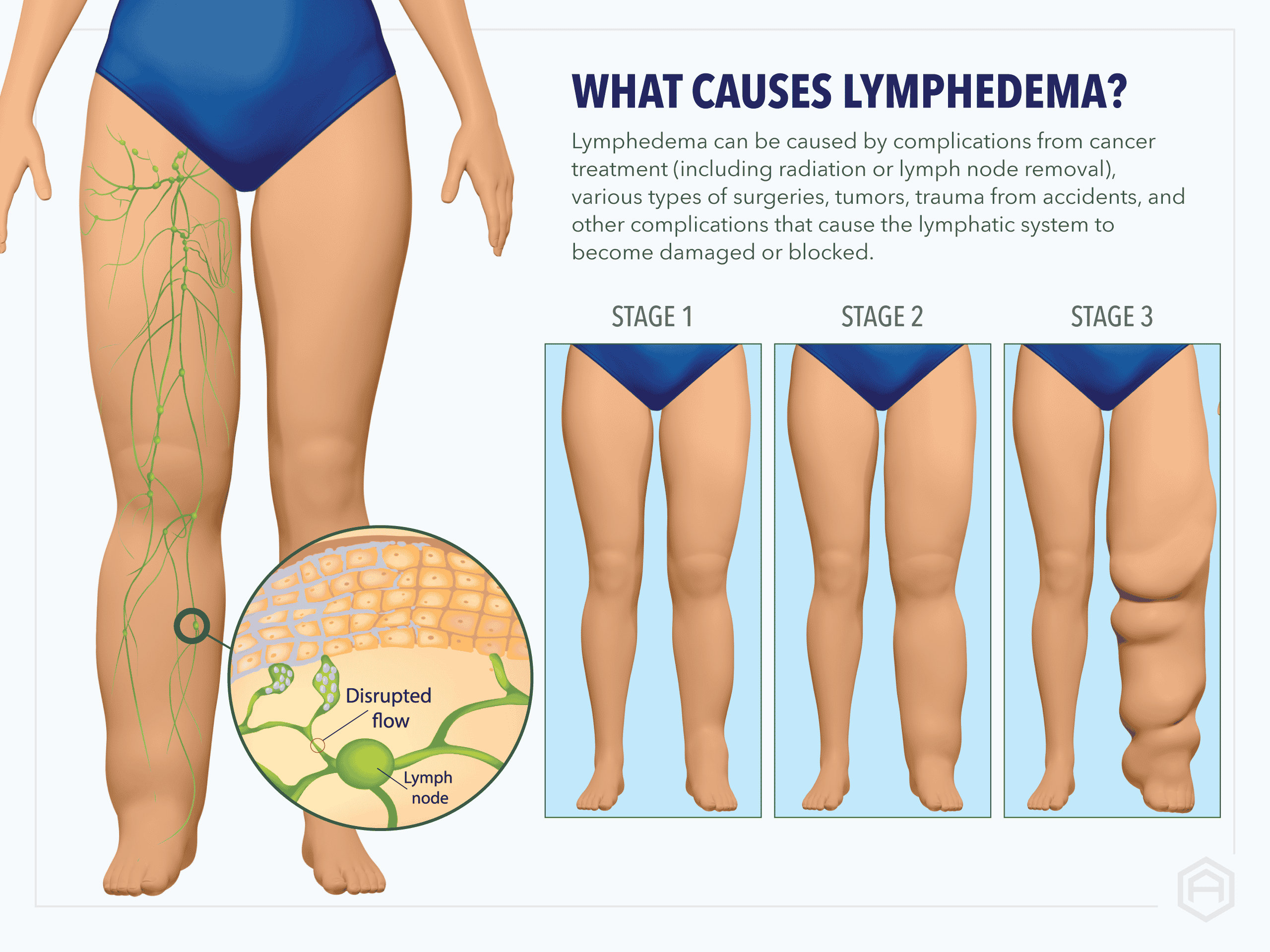
Lymphedema: Managing A Chronic Condition
Lymphedema is a chronic lymphatic disease resulting in swelling of the legs, arms, or other areas of the body.
Raising Awareness
Various research reports indicate that about 3-5 million people in the United States are affected by lymphedema. However, many clinicians believe that the number could be around 10 million, as lymphedema is highly undiagnosed due to a lack of awareness, education, and information about the condition.


Risk of Lymphedema
Experts estimate that 5% to 40% of women will experience some level of lymphedema after breast cancer surgery.
Sentinel lymph node biopsy
According to the National Cancer Institute, 5% to 17% of women who have SLNB develop lymphedema.
Sentinel lymph node dissection
Research shows that between 3.7% and 17% of women will experience lymphedema after sentinel lymph node dissection.
Lymphedema Background
The lymphatic system is comprised of tissues, vessels, and organs that transport lymph – a fluid containing white blood cells – throughout the body. The tonsils, adenoids, and spleen are part of the lymphatic system, as well as hundreds of lymph nodes in the body. The lymphatic system helps rid the body of harmful bacteria, waste, and toxins, and is a critical part of the cardiovascular system.
Lymphedema can be hereditary (Primary Lymphedema). In these rare cases, the individual is born with complications of the lymphatic system.
However, almost all patients with lymphedema experience Secondary Lymphedema, or acquired lymphedema. In these cases, the lymphatic system becomes impaired, causing the normal transport of lymph fluid to get disrupted.
Secondary Lymphedema can be caused by complications from cancer treatment (including radiation or lymph node removal), various types of surgeries, tumors, trauma from accidents, and other complications that cause the lymphatic system to become damaged or blocked.
The disruption of the lymphatic system (lymphedema) can cause massive swelling (edema) in affected areas of the body because the lymph fluid cannot flow as intended. The fluid can pool in the body and cause swelling. When this occurs, treatment is needed to move the fluid in the correct physiological direction.
Lymphedema is a chronic condition that can only be managed, not cured. Left unchecked, lymphedema can cause additional health complications, such as pain, immobility, skin infections and cellulitis, venous ulcers, tissue fibrosis, and more.
Symptoms of lymphedema include:
- Swelling in the legs, arms, or other areas of the body
- Pain
- Tightness or aches
- Hardening of the skin (fibrosis)
- Swollen lymph nodes
- Restricted range of motion
How Our Devices Help Treat Lymphedema
Sequential Compression Devices – also known as Pneumatic Compression Devices (PCD) – are comprised of an air pump device and associated garments with various air chambers.
The device delivers air to the chambers of the garment to produce targeted pressure in a specific timing sequence. This pressure squeezes the swollen limb and massages fluid in the correct direction, typically back towards the heart.
The pressure, timing, length, frequency, and type of therapy delivered by sequential compression devices are all prescribed by a physician.
Next Steps
For more information about lymphedema, including resources for individuals living with the condition, please explore the following organizations.
NEED MORE INFORMATION? Contact Us Today.
Are you a patient with questions about your device? A DME supplier interested in learning about compression devices? A clinician seeking product information? Please contact us to speak with an AIROS Medical representative.





